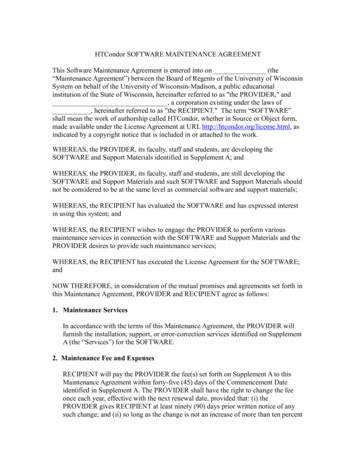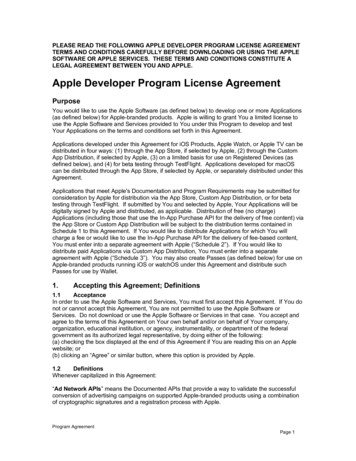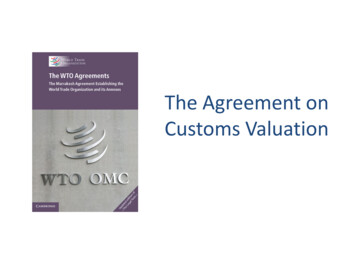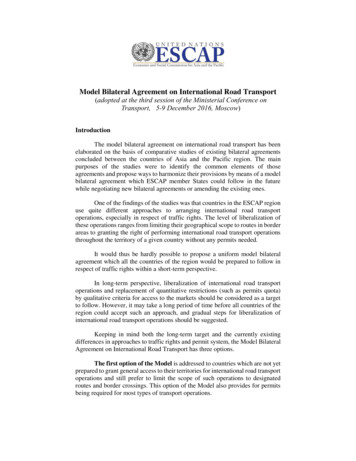
Transcription
Model Bilateral Agreement on International Road Transport(adopted at the third session of the Ministerial Conference onTransport, 5-9 December 2016, Moscow)IntroductionThe model bilateral agreement on international road transport has beenelaborated on the basis of comparative studies of existing bilateral agreementsconcluded between the countries of Asia and the Pacific region. The mainpurposes of the studies were to identify the common elements of thoseagreements and propose ways to harmonize their provisions by means of a modelbilateral agreement which ESCAP member States could follow in the futurewhile negotiating new bilateral agreements or amending the existing ones.One of the findings of the studies was that countries in the ESCAP regionuse quite different approaches to arranging international road transportoperations, especially in respect of traffic rights. The level of liberalization ofthese operations ranges from limiting their geographical scope to routes in borderareas to granting the right of performing international road transport operationsthroughout the territory of a given country without any permits needed.It would thus be hardly possible to propose a uniform model bilateralagreement which all the countries of the region would be prepared to follow inrespect of traffic rights within a short-term perspective.In long-term perspective, liberalization of international road transportoperations and replacement of quantitative restrictions (such as permits quota)by qualitative criteria for access to the markets should be considered as a targetto follow. However, it may take a long period of time before all countries of theregion could accept such an approach, and gradual steps for liberalization ofinternational road transport operations should be suggested.Keeping in mind both the long-term target and the currently existingdifferences in approaches to traffic rights and permit system, the Model BilateralAgreement on International Road Transport has three options.The first option of the Model is addressed to countries which are not yetprepared to grant general access to their territories for international road transportoperations and still prefer to limit the scope of such operations to designatedroutes and border crossings. This option of the Model also provides for permitsbeing required for most types of transport operations.
The second option of the Model has no reference to designated routesand border crossings, but provides for permits with quantitative restrictions(quotas) in respect of most types of international transport operations. Thisapproach is common in the region.The third option of the Model provides for a permit-free legal regimefor occasional transport of passengers and for bilateral and transit transport ofgoods. The permits are required only for regular transport of passengers and forthird-country transport of goods. A number of countries in the region currentlyfollow a similar approach in their bilateral agreements on international roadtransport.The wording of other provisions of the Model is kept uniform in all thethree options, in order to provide the countries with a reference guide that couldbe followed during negotiations of new bilateral agreements or amendments toexisting ones.
Model bilateral agreement on international road transportOption 1: the case with designated routes and border crossings and with permitsbeing required for most types of transport operationsThe Government of (country) and the Governmentof (country), hereinafter referred to as the ContractingParties,Desiring to develop international transportation of goods and passengersby road between their countries and through their territories and to facilitate roadtransport connectivity between their countries and beyond,[other texts as necessary]Have agreed as follows:I. GENERAL PROVISIONSArticle 1 (Scope of application)In accordance with this Agreement the international transport ofpassengers and goods between the States of the Contracting Parties and in transitthrough their territories, as well as to / from third countries, shall be carried outby vehicles registered in the territory of the State of one of the ContractingParties.Article 2 (Terms and definitions)For the purpose of this Agreement:“Competent authorities” mean:For (name of the Contracting Party 1) (names(s) of the respective competentauthority(ies)For (name of the Contracting Party 2) (names(s) of the respective competentauthority(ies)“International road transport” means movement of vehicles either ladenor unladen with crossing of State border and (or) through the territory(ies) of theState(s) of the Contracting Party(ies);“Regular transport of passengers” means carriage of passengers over aspecified route, according to a timetable, with set fares charged, and withpredetermined stopping points where the passengers are picked up or set down;“Occasional transport of passengers” means any other carriage ofpassengers not falling under the definition of “regular transport of passengers”;
“Carrier” means an individual or a legal entity established in the territoryof the State of one of the Contracting Parties and authorized in accordance withnational laws and regulations of its country to perform international carriage ofgoods or passengers by road;“Vehicle” means a motor vehicle registered in the State of one of theContracting Parties at the disposal of a carrier through being its own property orthrough hiring or leasing contract; In case of transport of passengers – any motorized vehicle intendedfor carrying passengers with more than nine seats including the driver's seat,including luggage trailer in the place where carriage takes place and such luggagetrailer is not forbidden; In case of transport of goods - any motorized vehicle intended forcarrying goods, including truck, truck with trailer, motor tractor and motor tractorwith semi-trailer;“Trailer” means any vehicle designed to be drawn by a power-drivenvehicle, and includes semi-trailer;“Driver” means an individual authorized by the competent authority of aContracting Party to operate the vehicle;“Driving license” means a document issued by the competent authority ofa Contracting Party granting the right to the driver to operate the vehicle;“Permit” means a document issued by the competent authority of aContracting Party granting the right to undertake an international road transporton the territory of the State of that Contracting Party by a carrier established inthe State of the other Contracting Party;“Special permit” means an additional single-use permit issued inaccordance with national laws and regulations of a Contracting Party for a carrierestablished in the State of another Contracting Party to carry oversized,overweight or dangerous goods on its territory;“Third-country permit” means a single-use permit for a carrier of oneContracting Party to run a vehicle from the territory of the State of anotherContracting Party to the territory of a third State, or from the territory of a thirdState to the territory of the State of the other Contracting Party;“Sanitary inspection” means medical, veterinary and phytosanitaryinspection.[The Contracting Parties may add any other definition deemed relevant ornecessary for the clarity of the agreement]
II.TRAFFIC RIGHTSArticle 3 (Routes and border crossings)1.Carriage of goods and passengers by vehicles between the territories ofthe States of the Contracting Parties (and in transit through their territories) isundertaken on the routes and through the State border crossings as agreed by theContracting Parties and defined in the Annexure to this Agreement.2.The list of routes and State border crossings is amended by arrangementsbetween the competent authorities of the Contracting Parties.Transport of PassengersArticle 4 (Regular transport of passengers)1.Regular transport of passengers is performed on the basis of a permitgranted by the competent authorities of the Contracting Parties.2.Information on the route, the timetable, the fares, stopping points at whichthe carrier will embark and disembark passengers, and also the period andfrequency of the transport, as well as other conditions agreed upon by thecompetent authorities of the Contracting Parties are indicated in the permit or inan annex to the permit, which should be certified by the competent authorities ofthe Contracting Party where the carrier is established.3.Proposals for regular transport of passengers are submitted to each otherby the competent authorities of the Contracting Parties. The decision of grantinga permit or of refusal of granting a permit should be taken within monthsupon the submission of the proposals.4.The period of validity of the permit for regular transport of passengers isyear(s). The competent authorities of the Contracting Parties can amend thisperiod upon their mutual agreement.Article 5 (Occasional transport of passengers)1.Occasional transport of passengers, with the exception of transportoperations listed in Article 6 of this Agreement is performed on the basis ofpermits issued by the competent authorities of the Contracting Parties.2.For each occasional transport of passengers a separate permit is issued,which gives the right for a single outward and return journey, unless otherwisespecified in the permit.3.Each year the competent authorities of the Contracting Parties exchangewithout charge a jointly agreed quantity of blank permits for occasional transportof passengers. The blanks bear the signature of the relevant official and the stampof the competent authority that has issued the permit.
4.The competent authorities of the Contracting Parties agree on theprocedure for the practical exchange of blank permits.Article 6 (Permit exemption for occasional transport of passengers)1.Α permit for occasional transport of passengers is not required if the samegroup of passengers is being carried in the same bus throughout the entire trip,and:a)the journey starts and terminates on the territory of the State of theContracting Party where the bus is registered;b)the journey starts on the territory of the State of the ContractingParty where the bus is registered and terminates on the territory of the State ofthe other Contracting Party, on the condition that the bus leaves the territory ofthe State of that Contracting Party empty;c)the bus enters the territory of the State of the other ContractingParty to carry the group of passengers brought in earlier by the same carrier.2.For occasional transport under paragraph 1 of this article the driver of thebus shall be in possession of the list of passengers in the format agreed by thecompetent authorities of the Contracting Parties.3.Α permit is likewise not required for the passage of a bus to replace a bus thathas broken down within the course of an occasional transport of passengers.Transport of GoodsArticle 7 (Permits for transport of goods)1.Transport of goods between the territories of the States of the ContractingParties and in transit through their territories, with the exception of transportoperations listed in Article 8 of this Agreement, are performed on the basis of apermit issued by the competent authorities of the Contracting Parties. Permit isalso required for run of unladen vehicle entering the territory of the State of theother Contracting Party.2.The competent authorities of the Contracting Parties issue multiple-useor single-use permits.3.Multiple-use permit gives the right to perform more than one outward andreturn journey within the time period indicated in the permit. The competentauthorities of the Contracting Parties shall jointly define the conditions of issuingmultiple-use permits.4.Single-use permit gives the right for one outward and return journey.5.The carrier of the State of one Contracting Party may transport goodsfrom the territory of the State of the other Contracting Party to the territory of athird State and from the territory of a third State to the territory of the State of the
other Contracting Party on the basis of a third-country permit, issued by thecompetent authorities of the other Contracting Party.[The Contracting Parties may condition such transport operations on theexistence of transport agreements with the third States concerned]6.Each year the competent authorities of the Contracting Parties exchangewithout charge a jointly agreed quantity of blank permits of all types for thetransport of goods. The blanks bear the signature of the relevant official and thestamp of the competent authority that has issued the permit. Permits issued in thecourse of each year shall be valid until 31 January of the following year or asagreed by the parties.7.The competent authorities of the Contracting Parties agree on theprocedure for the practical exchange of blank permits.Article 8 (Permit exemption for transport of goods)1.Α permit as referred to in paragraph 1 of Article 7 of this Agreement isnot required for the following types of transport:a)Transport performed by vehicles, the maximum permissible weightof which, including a trailer or semitrailer, does not exceed 6 tonnes, or thepermitted payload of which, including a trailer or semitrailer, does not exceed3,5 tonnes; [Subject to relevant national legislation of the States of theContracting Parties]b)Transport of a tractor to replace the tractor that has broken down inthe course of transport;c)Transport of medical equipment, appliances and drugs foremergency medical aid, particularly in response to natural disasters andhumanitarian needs;d)Transport of exhibits, works and objects of art, equipment andmaterials for fairs and exhibitions;e)Transport of decor, other properties, animals intended fortheatrical, musical, sport or circus performances, fairs and movie shows, as wellas articles intended for radio recordi
through hiring or leasing contract; In case of transport of passengers – any motorized vehicle intended for carrying passengers with more than nine seats including the driver's seat, including luggage trailer in the place where carriage takes place and such luggage trailer is not forbidden; In case of transport of goods - any motorized vehicle intended for carrying goods, including .
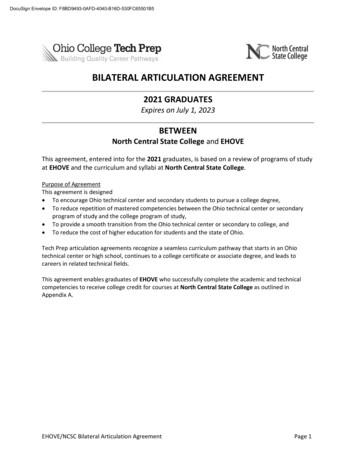
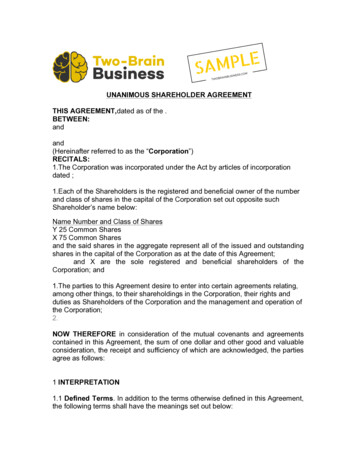
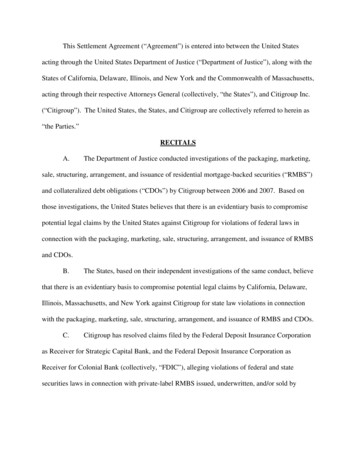


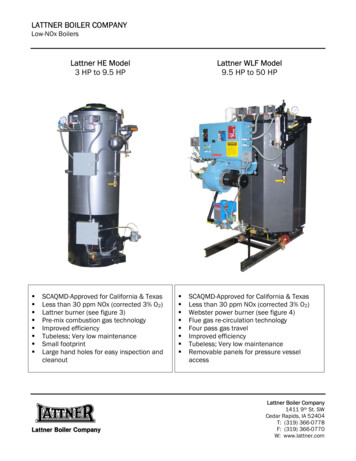
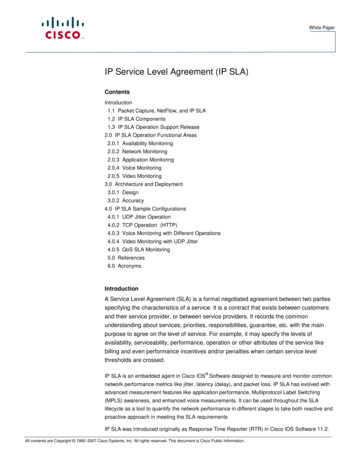
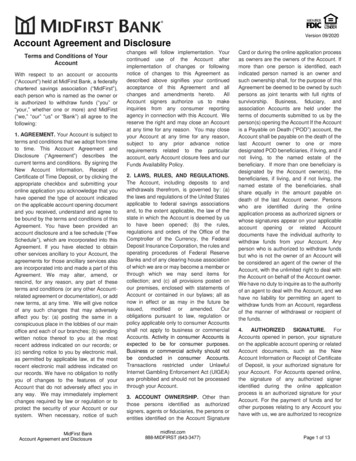
![Shareholders’ Agreement of [Company name] company. 1 .](/img/1/startup-founders-sha-sample.jpg)
